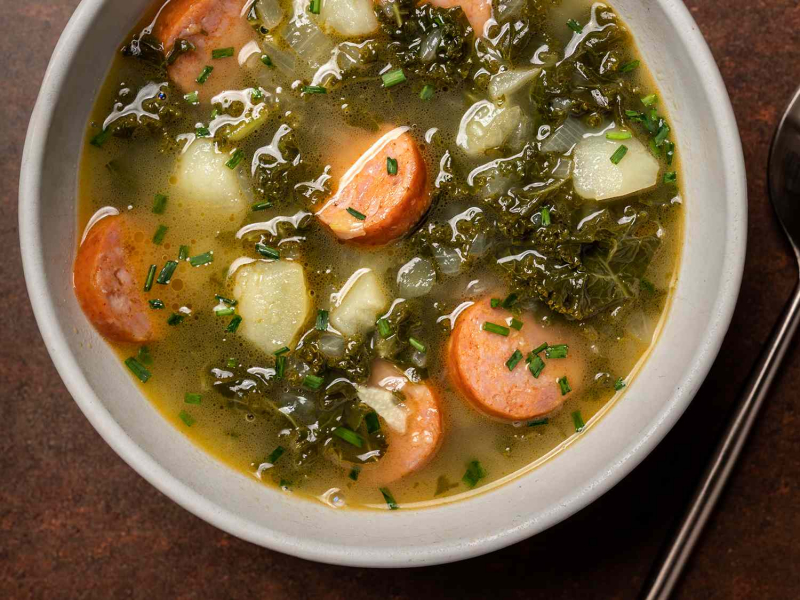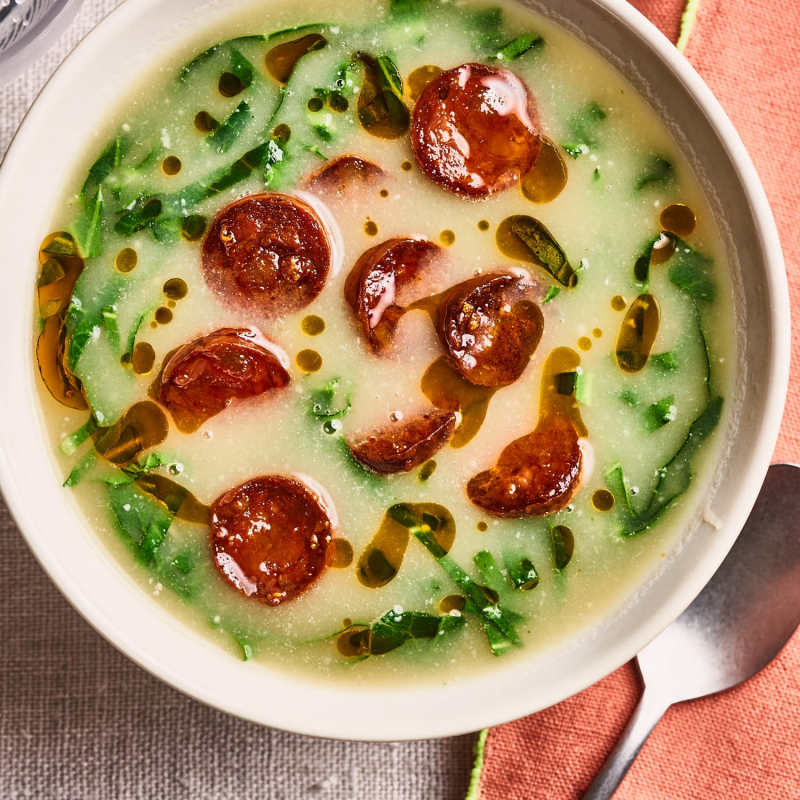Caldo Verde
The Caldo Verde recipe, which is regarded as one of the 7 Wonders of Portuguese Gastronomy, originated in the Minho region, which is among the coldest and wettest in the nation. Starting in the fifteenth century, this hot soup formed the foundation of peasants' diets.
The basic traditional ingredients for Caldo Verde are potatoes, olive oil, black pepper, salt, and finely chopped Portuguese cabbage or couve-galega (basically a type of collard green), as well as other leafy greens like kale or mustard greens. The primary seasonings are onion and garlic (some regional recipes favor slight variations, like turnip greens or added meat, such as ham hock, making it similar to Italo-American wedding soup). Traditionally the soup is accompanied by slices of paio, chouriço, or linguiça (boiled whole with the potatoes, then sliced and added to the finished soup when serving) and with Portuguese broa corn-bread or rye-bread for dipping.
Traditionally, cornbread and a glass of fine red wine should be served with the Caldo Verde soup in clay bowls. This dish was changed to fit the cultures of several nations colonized by Portugal, including Brazil, where a different kind of sausage is used. During Portuguese events like weddings, birthdays, and other popular celebrations, people generally eat the well-known soup Caldo Verde. It is occasionally eaten as a late dinner or before the main course. The traditional earthenware bowl known as a tigela is used to serve this soup.
Country: Portugal














